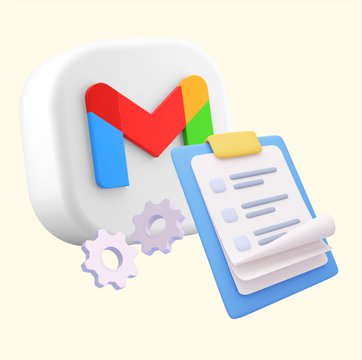10 Cancellation Email Templates and Their Use Cases

Table of contents
Businesses send cancellation emails all the time. It could be because of a subscription cancellation, an order cancellation, or an event cancellation.
Irrespective of the scenario, the way you communicate a cancellation has to be very clear. You need to mention the reason for the cancellation, and also ensure that you keep the door open for future business – be it details on refund policies, rescheduling options, or alternative contact information in case the recipient is seeking further assistance.
So, how do you exactly frame such an email? In this article, we’ve covered ten cancellation email templates for different situations. Each template in our list is designed to help you communicate cancellations professionally, ensuring the recipient feels valued and informed.
Table of Contents
- Cancellation Email Templates for Different Use Cases
- Get Started with Writing Effective Cancellation Emails
Cancellation Email Templates for Different Use Cases
Here are ten cancellation email templates tailored to different scenarios. Feel free to customize these templates to suit your specific use case.
1. Subscription cancellation
This is a format you can use to email customers about the cancellation of their subscription services. It essentially acts as a confirmation email to a cancellation request that was initiated by the customer.
Include information about the details about the end of service (about refunds, remaining credits, or access to services) and how customers can renew the plan if they’re interested.
Subject: Your Subscription Has Been Canceled
Hi [Customer’s Name],
We hope this email finds you well.
This email is to confirm that your subscription to [Your Company/Service Name] has been successfully canceled.
Details of Your Cancellation:
Subscription Plan: [Plan Name]
Cancellation Date: [Cancellation Date]
You will no longer be billed for this subscription.
Access to [specific features or services] will be available until [last active date if applicable].
We appreciate the time you spent with us and hope that you found value in our service.
If you change your mind and wish to reactivate your subscription, simply log into your account or contact our support team at [Support Email/Phone Number].
Thank you for being a part of the [Your Company/Service Name] community.
Best regards,
[Your Name]
[Your Position]
[Your Company/Service Name]
2. Event cancellation
If an event you were hosting got canceled for some reason, it is important to notify your attendees as soon as possible. Make sure to explain why the event was canceled.
In case of paid events, include instructions on how attendees can get a refund on their registration fee. If you plan to reschedule the event, include information on where your attendees can find updates about the same.
Remember to use clear language and to-the-point email phrases when framing your message.
Subject: Important: [Event Name] has been cancelled
Hey [Attendee Name],
We regret to inform you that [Event Name] scheduled on [Date] at [Time] has been canceled due to [Reason for Cancellation].
We extend our sincere apologies for the inconvenience caused. But, we’re working with our event partner to reschedule [Event Name] at the earliest.
You can find more information and updates at [URL Link].
If you have already purchased tickets, you will receive a full refund within [number] business days. If you do not see the refund in your account by then, please contact our support team at [Support Email/Phone Number].
For any other questions or assistance, please contact [Support Email/Phone Number]. We are here to help.
Best regards,
[Your Name]
[Your Position]
[Your Organization’s Name]
3. Appointment cancellation
You may have had to cancel an appointment with a customer and in such cases, professional courtesy dictates that you inform them immediately about it.
An appointment cancellation email helps keep the customer in loop and also provides information on when the meeting with be rescheduled. Don’t forget to apologize to your customers for the missed appointment.
Subject: Your appointment for [Date] has been canceled
Hey [Recipient’s Name]
We hope this message finds you well.
We are writing to notify you that your scheduled appointment with [Company Name] at [Date, Time] has been canceled due to [Reason].
Sincere apologies for any inconvenience this may have caused to your schedule.
We would be happy to reschedule your appointment at a date and time that would be convenient for you.
Please feel free to contact us at [Contact Information] or use our online scheduling app [Link] to reschedule your appointment.
Best
[Your Name]
[Your Position]
[Your Company Name]
4. Order cancellation
As the name suggests, an order cancellation email is used to inform customers that their order has been canceled. They provide clarity about the order status, reasons for cancellation, and next steps such as refunds or reorders.
It’s also a good customer service practice to offer a free coupon or discount for the customer’s next purchase as a way to pacify them and to show your appreciation for their patience.
Here are some possible reasons why orders get canceled.
- Payment issues: The payment may not have gone through due to insufficient funds or a problem with the payment gateway.
- Inventory problems: The ordered item may have gone out of stock.
- Shipping issues: The customer’s address may have been incorrectly given or there may be restrictions in delivering to the particular location.
Subject: Your Order #[Order Number] has been canceled.
Hey [Customer’s Name],
We regret to inform you that your order #[Order Number] containing [Item Names] has been canceled due to [Reason for Cancellation].
If you’ve already been charged for this order, you will receive a full refund, credited to your source account in the next 2-3 business days.
We apologize for any inconvenience this may have caused you.
As a token of our appreciation, here is a coupon code to avail 15% of your next purchase with [Company Name]: [Coupon Code].
If you have any questions or need further assistance, please feel free to contact us at [Contact Information].
Best
[Your Name]
[Your Position]
[Your Company Name]
5. Reservation cancellation
Clear and timely communications about canceled reservations is essential to mitigate any negative feelings towards your business.
It helps customers to free up their resources (such as seatings, rooms, or appointments) and make adjustments to their schedule.
Subject: Your reservation #[Reservation Number] has been canceled
Hey [Recipient’s Name]
We regret to inform you that your reservation at [Company Name] for [Date, Time] had to be canceled due to [Cancellation Reason].
We sincerely apologize for any inconvenience this may have caused and appreciate your understanding. If you would like to reschedule your reservation or need any further assistance, please do not hesitate to contact our customer support team at [customer support email/phone number].
Thank you for your understanding, and we look forward to serving you in the future.
Best
[Your Name]
[Your Position]
[Company Name]
6. Policy cancellation
Mostly sent by insurance companies, policy cancellation emails are sent to customers to notify them that their insurance policy or a similar contract-based agreement has been canceled.
It is essential to provide clear information about policy cancellation so that customers can address the potential issues that led to it. These emails also serve as documentation to record the cancellation so that it can be used as a future reference both by the customer and the company.
Here are some possible reasons why policies get canceled.
- Non-payment: The customer may have missed paying their premiums.
- Violation of terms: The terms listed in the policy may have been violated or the customer may have failed to comply with essential criteria.
- Risks: A policy may be canceled if the customer takes an action that could increase their risk profile. For instance, leaving their jobs, or moving to a high-risk area.
- Compliance issues: The policy is outdated and no longer compliant with the latest laws and regulations.
Subject: Important Notification: Policy #[Policy Number] has been cancelled.
Hey [Recipient Name]
This is a written confirmation to inform you that your policy #[Policy Number] dated [Date] will be canceled effective [Cancellation Date].
The policy has been canceled due to [Cancellation Reason].
If you have any remaining balance or refund due, it will be processed and communicated to you separately within [number of days] business days.
We apologize for any inconvenience this may cause and appreciate your understanding.
If there is anything we can do to assist you or if you would like to discuss alternative options, please let us know.
Thank you for your attention to this matter.
Best
[Your Name]
[Your Position]
[Your Company Name]
7. Trial cancellation
These emails are sent as confirmations to users who have decided to cancel their free trial of a product or service. Trial cancellation emails acknowledge the customer’s request and provide information on what they can expect next.
You can add a customer feedback option within your emails to understand why a particular user chose to cancel their trial and how it can be addressed to avoid future cancellations.
Subject: Confirmation of your trial cancellation
Hey [Recipient Name],
We hope this message finds you well.
We are writing to confirm that your trial subscription for [Product/Service Name] has been successfully canceled as of [Cancellation Date]. We’re sorry to see you go and appreciate you giving our service a try.
What happens next:
-You will continue to have access to all trial features until [Trial End Date].
-You will not be billed for this service.
-If you change your mind, you can easily reactivate your trial by contacting our support team at [Support Email/Phone Number].
Your feedback is incredibly important to us. If you could take a moment, do share your thoughts by completing this survey [Survey Link].
Thank you for trying [Product/Service Name]. We hope to have the opportunity to serve you again in the future.
Best
[Your Name]
[Your Position]
[Your Company/Service Name]
8. Recurring payment cancellation
This is a written confirmation informing customers that their recurring payment for a subscription or similar service has been canceled.
This formal email ensures that there is no misunderstanding or confusion regarding payments, especially if customers are unsure if their cancellation requests went through and if they’ll be charged again.
Subject: Confirmation of your recurring payment cancellation
Hey [Customer Name]
This is to acknowledge that we’ve received your request to cancel recurring payments from your account.
All payments will be canceled, effective from [Date] as per your request.
If you’d like any further assistance with payments or refunds please feel free to contact our billing team at [Contact Details].
If you have any other questions regarding our service, simply reply to this email and we’d be happy to help.
Best
[Your Name]
[Your Position]
[Your Company]
9. Account cancellation
Certain customer accounts may have to be canceled due to prolonged periods of inactivity, missed payments, policy changes, or if they are requested by customers themselves.
Account cancellation emails warn customers of the situation and help them take active measures to avoid it if they are not aware of the cancellation in the first place. Include a link to support in case a customer wants to follow-up with the account cancellation process.
Subject: Your account will be deactivated soon
Hey [Recipient Name],
We regret to inform you that your account with [Company Name] will be canceled effective [Date of cancellation] due to [Reason for cancellation].
If you have any balance user credits, you have until [Final Date] to finish using them.
To reactivate your account, simply visit [Support page] and follow the instructions.
If you have any questions or need further assistance, please do not hesitate to contact our customer support team at [customer support email/phone number].
Thank you for your attention to this matter.
Best
[Your Name]
[Your Position]
[Your Company Name]
10. Newsletter cancellation
Inactive subscribers can impact the delivery rates of your email newsletter. It’s important to keep your list clean and remove unengaged subscribers so that your newsletter reaches those who are truly interested in your content.
A newsletter cancellation email helps you confirm if the user is interested in going ahead with the cancellation or if they’d like to stay subscribed.
In fact, sending such an email may even prompt subscribers to revisit your newsletter to decide whether or not to go ahead and unsubscribe from your newsletter.
Subject: Your subscription to [Newsletter Name] will be canceled
Dear [Customer Name],
We noticed that you haven’t been engaging with our newsletters for a while.
As a result we’ve made the decision to cancel your subscription to [Newsletter Name] by [Date of Cancellation].
However, if this is an oversight, you can always re-subscribe to the newsletter by visiting our website [Website Link].
If you have any questions or need further assistance, feel free to contact our customer support team at [Customer Support Contact].
Thank you for your past interest in our content.
Best
[Your Name]
[Your Position]
[Your Company Name]
Get Started with Writing Effective Cancellation Emails
Effective communication, especially regarding sensitive matters like subscription cancellations, account deactivation, or event cancellations are essential to maintain professional relationships.
A well-crafted cancellation email helps you minimize confusion, foster transparency, and maintain customer satisfaction.
The templates we’ve put together are personalized and engaging and will help you manage cancellations effectively and maybe even stand a chance to re-engage a customer and turn potential negatives into opportunities.


































